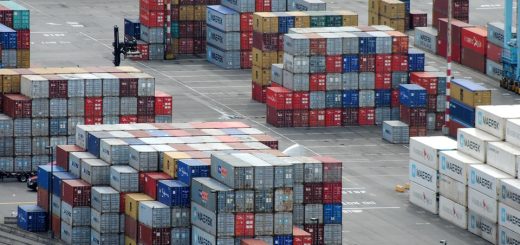Hybrid B2B & B2C Solutions: Your Ultimate Guide to Flexible China Consolidation for EU/US Shipments
Introduction: The Rise of Hybrid Shipping Needs
In an era where e-commerce bridges continents, businesses and individuals alike face a common challenge: how to efficiently ship goods from China to the EU/US. Whether you’re a small business owner importing inventory or a frequent shopper consolidating personal purchases, traditional logistics models often fall short. Enter hybrid B2B and B2C consolidation services—a game-changing approach that combines cost-efficiency, flexibility, and scalability to serve diverse client bases. This guide explores how these solutions work, their benefits, and how to choose the right provider for your needs.
Keyword-Optimized Sections & Content Strategy
1. The Pain Points of Traditional China Shipping
- For B2B Clients:
- High minimum order quantities (MOQs) from Chinese suppliers.
- Fragmented shipments leading to inflated costs.
- Compliance with EU/US customs regulations (e.g., product labeling, anti-dumping duties).
- For B2C Clients:
- Exorbitant shipping fees for single parcels.
- Delayed delivery due to uncoordinated logistics.
- Risk of lost packages in international transit.
- SEO Opportunity: Target phrases like “china shipping challenges for small businesses” and “personal consolidation services from China”.
2. What Is Hybrid B2B/B2C Consolidation?
- Definition: A logistics model that aggregates shipments from multiple clients (both corporate and individual) into shared containers or pallets, reducing per-unit costs.
- Key Features:
- Mixed Cargo: Combines commercial inventory and personal goods in one shipment.
- Flexible Pricing: Pay only for the space you use (no MOQs for B2C clients).
- End-to-End Tracking: Real-time updates from warehouse to doorstep.
- SEO Hook: Use keywords like “hybrid B2B B2C shipping” and “china consolidation for small businesses”.
3. Benefits for EU/US Clients
- Cost Savings:
- B2B clients save up to 60% on freight by sharing container space.
- B2C users pay as little as $1/kg for consolidated parcels.
- Speed:
- Faster transit times via optimized routes (e.g., China–EU rail vs. slow sea freight).
- Compliance Support:
- Providers handle tariff classification, VAT registration, and Incoterms guidance.
- Sustainability: Reduced carbon footprint through shared shipments.
- SEO Opportunity: Long-tail keywords like “cheapest way to ship from China to US” and “eco-friendly China consolidation”.
4. How to Choose a Consolidation Partner
- Red Flags to Avoid:
- Lack of transparency in pricing or hidden fees.
- No insurance options for high-value goods.
- Poor reviews on platforms like Trustpilot or Sitejabber.
- Must-Have Features:
- Customs Expertise: Specialized knowledge of EU/US regulations (e.g., REACH, CPSIA).
- Tech Integration: API access, automated tracking, and mobile apps.
- Security: SGS-certified warehouses and tamper-proof seals.
- Top Providers:
- ChinaDivision: Strong B2B focus with warehouses near Yiwu.
- ShipHero: Eco-friendly packaging and carbon offset programs.
- MyUS: User-friendly platform for B2C shoppers.
- SEO Tip: Mention brands naturally while targeting keywords like “best China consolidation service for EU”.
5. Case Studies: Real-World Success
- Case 1: E-commerce Storeowner in Germany
- Challenge: Sourcing electronics from Shenzhen but stuck with high MOQs.
- Solution: Used a hybrid consolidator to combine orders from 5 suppliers into one shipment.
- Result: Saved $2,500 in shipping costs and reduced lead time by 2 weeks.
- Case 2: US Family Shopping on Taobao
- Challenge: Accumulated 30 small parcels from AliExpress, each with $50 shipping.
- Solution: Consolidated all items into one pallet via a US-based consolidator.
- Result: Paid 120totalinsteadof120totalinsteadof1,500, with zero damaged goods.
- SEO Value: Phrases like “china consolidation success stories” and “how to save money shipping from AliExpress”.
6. Advanced Tips for Optimizing Shipments
- For B2B Clients:
- Negotiate volume discounts with consolidators (e.g., tiered pricing for >5 pallets/month).
- Use DDP (Delivered Duty Paid) terms to simplify customs.
- For B2C Clients:
- Join consolidation programs offered by money-saving apps like Rakuten or Honey.
- Timing: Ship during promotional periods (e.g., Singles’ Day) to maximize cost efficiency.
- Technical SEO: Link to resources like customs calculators or shipping rate charts.

